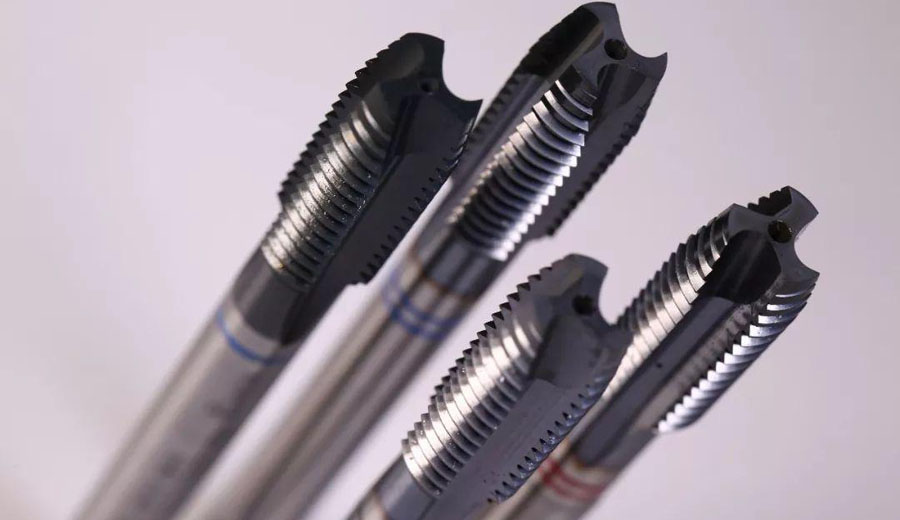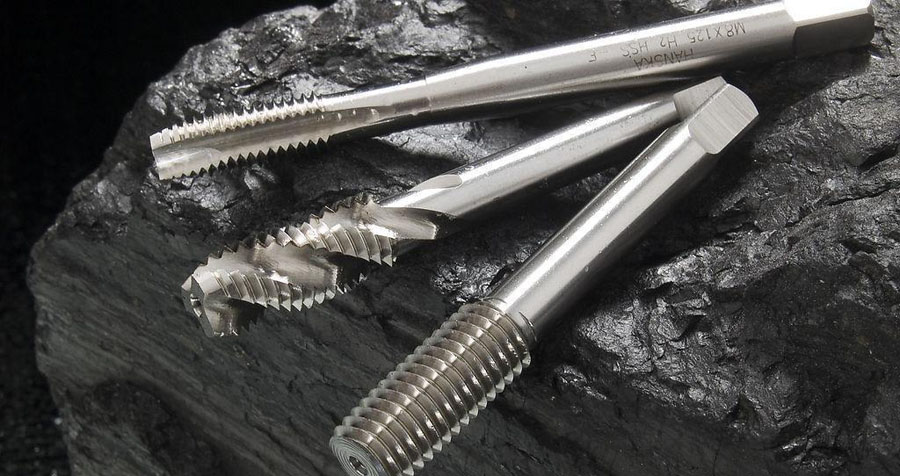01. The Tap Quality Is Not Good
Quality does not include main materials, tool design, heat treatment, machining accuracy, coating quality, etc. For example, the size difference at the transition of the tap section is too large, or the transition fillet is not designed to cause stress concentration, and it is prone to fracture during use. The section transition at the junction of the shank and the blade is too close to the welding port, which leads to the superposition of complex welding stress and the stress concentration at the section transition, which will produce a large stress concentration and cause the tap to break during use. For another example, improper heat treatment process: during the heat treatment of the tap, if the tap is not preheated before the quenching heating, the quenching is overheated or burned, the tempering is not in time, and the cleaning is too early, it may cause the tap to crack.
02. Improper Selection Of Taps
High-quality taps should be used for tapping parts with too much hardness, such as cobalt-containing high-speed steel wire taps, cemented carbide taps, and coated taps. In addition, different tap designs should be used in different work situations. The number, size, angle, etc. of the chip flutes of the tap will have an impact on the chip removal performance.

03. The Tap Does Not Match The Machined Material
This issue has received more and more attention in recent years. In the past, domestic manufacturers always felt that imported goods were good, expensive goods were good, but in fact they suitable are good. With the continuous increase of new materials and the increase in processing difficulty, in order to meet this demand, the variety of tool materials is also constantly increasing. This requires choosing the right tap product before tapping.
04. The Bottom Hole Diameter Is Too Small
For example, when machining M5×0.5 threads of ferrous metal materials, when using a cutting tap, a 4.5mm diameter drill should be used to make the bottom hole. If a 4.2mm drill bit is used to make the bottom hole by mistake, the cutting part of the tap will inevitably increase during tapping. , And then break the tap. It is recommended to choose the correct diameter of the bottom hole according to the type of tap and the material of the tapping part. If there is no fully compatible drill bit, you can choose a larger one.
05. Workpiece Material Problem
The material of the tapping part is impure, and there are excessive hard spots or pores in some parts, which cause the tap to lose balance and break instantly.
06. The Machine Does Not Meet The Accuracy Requirements Of The Tap
The machine tool and the clamping body are also very important, especially for high-quality taps. Only when fixed in a certain precision machine tool and clamping body can the performance of the tap be exerted. It is common that there is not enough concentricity. At the beginning of tapping, the starting position of the tap is incorrect, that is, the axis of the spindle is not concentric with the center line of the bottom hole, and the torque is too large during the tapping process, which is the main reason for the tap to break.
07. The Quality Of Cutting Fluid And Lubricating Oil Is Not Good.
Many domestic companies have begun to pay attention to this point. Many companies purchasing foreign tools and machine tools have a very deep experience. The quality of cutting fluids and lubricants has problems, and the quality of processed products is prone to burrs and other bad conditions. At the same time, the service life is also There will be a great reduction.

08. Unreasonable Cutting Speed And Feed
When there is a problem in machining, most domestic users reduce the cutting speed and reduce the feed rate, so that the advancement of the tap is reduced, and the precision of the thread produced will also be greatly reduced, which increases the roughness of the thread surface. Neither the thread diameter nor the thread precision can be controlled, and problems such as burrs are of course difficult to avoid. However, if the feed speed is too fast, the resulting torque is too large, which can easily cause the tap to break.
The cutting speed during machine tapping is 6-15m/min for general steel, 5-10m/min for quenched and tempered steel or harder steel; 2-7m/min for stainless steel and 8-10m/min for cast iron. For the same material, the smaller tap diameter takes a higher value, and the larger tap diameter takes a lower value.
09. The Operator’s Technology Does Not Meet The Requirements
The above problems require the operators to make judgments or give feedback to the technicians, but most of the domestic operators do not pay enough attention to them. For example, when processing blind hole threads, when the tap is about to touch the bottom of the hole, the operator does not realize that it is still fed at the tapping speed when the bottom of the hole is not reached, or the tap is broken by forced feeding when chip removal is not smooth.
It can be seen from the above that there are many reasons for the breakage of the tap. Machine tools, fixtures, workpieces, processes, chucks and tools, etc. are all possible. You may never find the real reason just by talking about it on paper.


